#Rashnu
Text

More druid drawings. Trying to actually get around to every single one of them.
My Rashnu headcanon is that he's a summoner. Pictured, summoning Nanghaithya.
Also playing with the idea that every "school" of summoning has different hand gestures for the summon. If/when I try to draw Elini she'll have a different one.
9 notes
·
View notes
Text







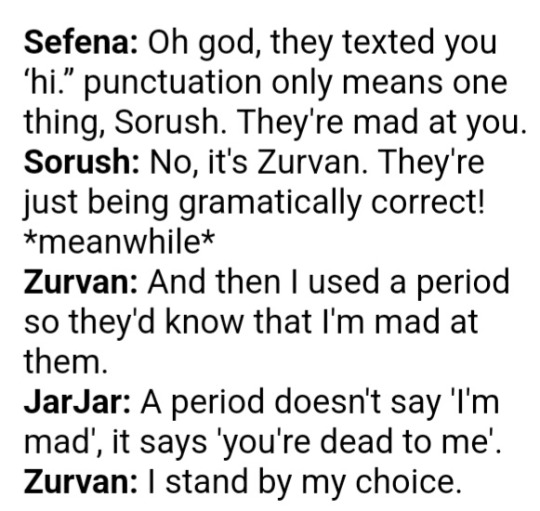
















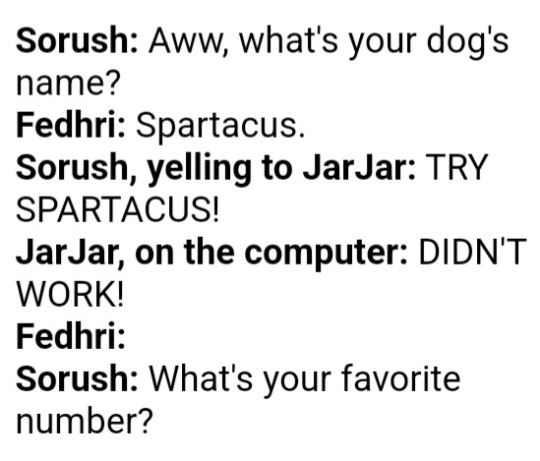


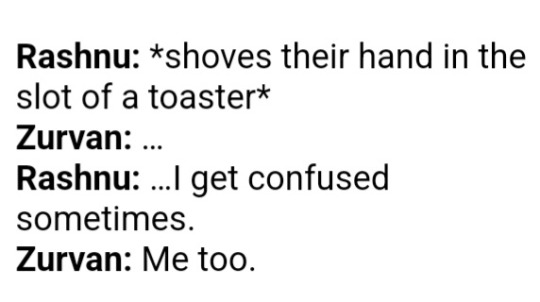


Have a LOT of incorrect quotes featuring all the (Named) Pari Characters... they are absolute chaos.
#OCTAfan says stuff#Sillypost#Genshin impact#Genshin memes#Genshin pari#Sorush#Fedhri#Zurvan#Rashnu#Sefena#Mihir#Genshin Jarjar#Tw genshin#tw swearing#Long post#undescribed#Ask to tag
7 notes
·
View notes
Text

TADA~✨🌼
Say hi to Sraousha and Rashnu!
Sraousha and Rashnu are the little brothers 🌚
Sraousha is the messenger between Ahura Mazda and the other gods, and Rashnu is the god of judge who pass judgment on the souls of people after death 🌝
I'll definitely introduce them fully in the next posts *^*/
#oc#original character#Mithra#Sraosha#Rashnu#ancient goddesses#ancient gods#ancient persia#art#drawing#traditional art#traditional drawing#color pencil#artwork#artists on tumblr#illustration#angel#angels#sheep#BABAEE
8 notes
·
View notes
Text
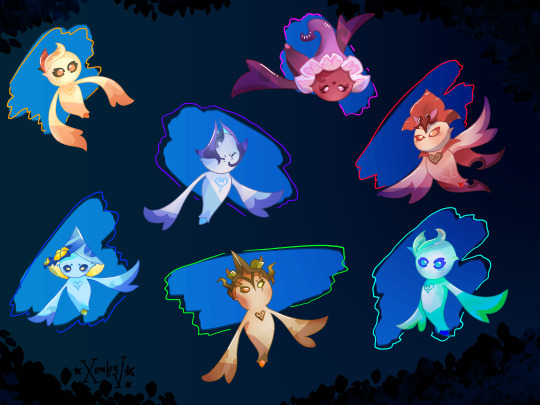
12 notes
·
View notes
Photo

Quick sketch of Rashnu from the latest Genshin World Quest ✨
8 notes
·
View notes
Text
Zorvanism - World History Encyclopedia
https://www.worldhistory.org/Zorvanism/
View On WordPress
#Achaemenid Empire#Ahriman#Ahura Mazda#Akarana#Angra Mainyu#Chinvat Bridge#Darius I#Denkard#Fatalistic#Frashokereti#heretical#Mainstream#Manichaeism#Materialistic#Mazdayasna#monotheistic#Ormuzod#Persia#Rashnu#Saoshyant#Sassanian Empire#Sects#Vohu Manah#Yasha#Zandiks#Zoroastrianism#Zorvan#Zorvanism
0 notes
Text
On Pacts and Portals (Down Once More)
When Rashnu has questions, not even a sealed Demon Portal will stop him from getting answers--especially when the well-being of his druid brethren is on the line. The next question, then, is what to do with the answers once he has them.
As told by Rashnu, the Druid of Darkness. Set during Aveyond 1: Rhen's Quest, after Rhen has rescued Armaiti. 3 chapters, total of 6.2k words. No warnings, no major spoilers if you've played the game to the point of rescuing Armaiti. Some spoilers for manor dialogue in chapter 3.
While I cannot say for certain why Leyrvo decided to build up the crypts below Ghed’ahre into a labyrinth, I can hazard a guess: he was a man of many secrets, and there are an infinite number of places to hide things in such a maze...
#Tei Writes a Thing#Fic: On Pacts and Portals#Aveyond#I finished this last week and forgot to post it here oops#I had every intention of writing a sort of prequel to this set just after Rashnu became a druid#but haven't done yet XD
0 notes
Note
Is the eevee a child of the pokemon ship you have?
Not exactly, but she's an adopted child for Rashnu (the Lucario) and Jophiel (the Gardevoir). Rashnu and Jophiel are not tasked on taking care of the child, credit to @redstarcat for her character design for Wanda. \o
8 notes
·
View notes
Note
there's a lot going on with the moon, how does it tie in with music?
HOKAY so for context: I wrote this big honkin' response to an anon who wanted only a breakdown of lore on the Moons in Genshin. In that post, I briefly discussed the names of the three Moon Sisters - Aria, Sonnet, and Canon - but didn't go into detail about what the Sisters actually have to do with music.
So let's do that now!
We've had lots of evidence so far to demonstrate that music has a real, tangible effect on Teyvat. More specifically, singing and music are very closely related to Dendro:
Singing to Glaze Lilies in Liyue causes them to bloom
Chanted prayers (and prayers are related to music, as I'll address shortly) play a major role in the cleansing of the Sacred Sakura in Inazuma
Singing the "Great Songs" of Khvarena is believed to stop the Withering
The korybantes / kory drums awaken Rashnu the Pari from her slumber
The Aranara songs on the Vintage Lyre (which is specifically from Mondstadt, or so says the description) allow you to communicate, bring things to life and even transcend realms
The first Aranara was created after Rukkhadevata sang to the ley lines, causing the Ashvatta Tree to grow and produce the Aranara as fruit.
Ley lines follow the path of Irminsul's growth through Teyvat - and it makes sense that Irminsul would be associated with music, since it's also associated with myths and fairy tales. We learned in Inversion of Genesis that historical fact can be protected from deletion from Irminsul if it's couched in allegory (that is to say, it uses symbolic stand-ins to carry its hidden core message). I bring this up only because music and its creation is associated with the divine in many major world mythologies:
The lyre (in Greek mythology) was invented by Hermes the day he was born, and was at different points given to Apollo (as an apology for stealing his cattle) and to Amphion (his...lover? stepbrother? unclear...to help him build Thebes. Like, the music of his lyre could move stone.)
In Chinese mythology, Fuxi (the half-dragon demigod who also was thought to have molded the first human beings out of clay) invented the yaoqin (now the guqin) after hearing the sound of phoenix song, and bestowed his gift to humanity so they could use it during celebrations.
While not responsible for creating the actual instruments, Odin is believed to have taught humanity how to create music and poetry by introducing them to mead in a less-than-tasty way.
In Aztec lore, the wind god Quetzalcoatl kidnaps musicians from the court of the Sun and brings them to the world of humans so that it may also be full of music. There are also multiple gods who govern the realm of music (Huehuecoyotl, Xōchipilli).
In Vedic (and later Buddhist) mythology, the goddess Sarasvati was the embodiment of music (as well as rivers, knowledge, and "all things that flow.")
The last two points here are especially important, as in them, music is directly tied to flowers (Xōchipilli is the Lord of Flowers; Sarasvati is often depicted upon a white lotus), water (Sarasvati is the anthropomorphization of a river with the same name; Xōchipilli wears a mother-of-pearl talisman shaped like a water droplet), and the moon (pearls are associated with the moon; Sarasvati is often said to "shine like the moon" or "wear the moon in her hair").
There are two figures in Genshin so far that have a close relation to these symbols: Greater Lord Rukkhadevata, and Nabu Malikata (the Goddess of Flowers). As far as the latter is concerned, there's very little we definitely know about her and more that can be implied from information elsewhere.
During the Aranara questline, we learned from Arama that Nabu Malikata is a Seelie who managed to retain her physical form after the calamity that tore the Moon Sisters apart (see moon lore post). While we're still not 100% on the relationship between Seelie and the Moons, we know that the Sisters oversaw a union between a Seelie and an Outlander - so, at the very least, the Seelie defer to the Moons for some manner of guidance or counsel.
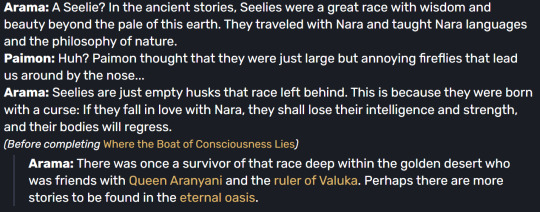
We also know that, while Nabu has retained her body, she still seems to be missing...something. This description from Dirge of Bilqis feels very...husk-y.

We know thanks to the Vourokasha's Glow set that the Khvarena (the Seelie-looking energy orbs that respond to the Great Songs and at various points in their lives are the Simurgh, the Pari, and water of the Amrita Pool) originate from Nabu.

Also, in A Drunkard's Tale, Vol. 3, we meet a "pale young maiden" who speaks an unknown language and plays a lute for the Seelie, possibly while sitting by the side of King Deshret's sarcophagus.
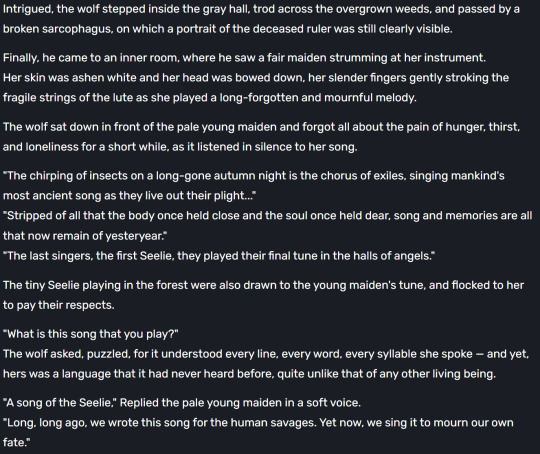
(I believed this figure to be Rukkhadevata on first read, but since the maiden refers to the Seelie as "we," it can be better assumed that this is Nabu Malikata playing the lute for her siblings.
If this is true, and it really is Nabu, then it implies that she and Rukkhadevata look alike? Which makes things between the two of them even messier, lore-wise. But that's for another post...hopefully.)
Let's circle back to the Greeks for a second.
The philosophies of Aristotle and Plato (two of the hard hitters when it comes to Genshin inspirations) are based on the theory of animism. The tl;dr of animism is that all living things (and depending on who you ask, non-living things) have a soul, and this soul can be acted upon separately from the physical form. So - that bush? It's got a soul. Water? Soul. Humans? Souls. Umbrellas? Maybe in a hundred years or so.
Since music was given to humanity by the gods, the act of a human creating music was considered a form of divine intervention - or possession.
A third Greek philosopher, who doesn't feature as prominently in Genshin but serves a huge purpose here, is Pythagoras. Much like other Greeks, he believed that music was divine in origin, and that it could be used to soothe or agitate the soul, depending on the tonal harmonies being played. However, Pythagoras took it an extra step by blowing the theory up to cosmic proportions.
Basically, Pythagoras (and his followers) observed that certain objects - like the strings on a lute - moved when they produced sound, and that the size and speed at which those objects moved affected the sounds that were made. Bigger things moved slower, and made lower pitched sounds; smaller, faster-moving objects made higher-pitched sounds. And so Pythagoras extrapolated: the planets and stars in space are very, very big. And they move very, very fast. So they must produce a sound. And this sound is SO loud and has been around for SO long that people were incapable of hearing it. The theory was later picked up and expounded upon by Johannes Kepler, who postulated that the harmonies between planets couldn't be heard, but could be felt within the human soul.
This concept is now known as musica universalis, or music of the spheres.
-
OKAY that's a lot of information! So let's break down how it all fits together.
We have three Moons, named after types (or parts) of music.
The Moons are divine in nature, and so is music - suggesting that they're the reason why humans on Teyvat have music at all.
The Moons are related to the Seelie (and the Goddess of Flowers), who for one reason or another are cursed to have their souls split from their bodies.
In Teyvat, music affects the movement and growth of elemental energy - Irminsul, Aranara, Sacred Sakura, other plants, etc.
Music, mythologically, also has an impact on the soul - hence why Seelie and parts of other beings' souls (Khvarena, the Pari) respond to it.
-
I don't really know how to end this post so let's wrap it up with some miscellaneous notes and baseless speculation:
Is all elemental energy soul-based? Because it's sure starting to feel that way. (There's definitely going to be a follow-up post about emotions and music. Just wait.)
How close are Rukkhadevata and Nabu Malikata?? Are they two of the three Moon Sisters? Are they parts of the same god?? Will we ever find out for sure??? And when am I going to stop mixing them up when doing my research!?!
In my OG Moon post I mentioned how the Sisters are said to control heroes' fates (see Xiphos' Moonlight lore). If the Moons are related to music, and Irminsul responds to song, this may mean (literally or figuratively) that the feeding of music through Irminsul can affect (or alter) how those heroes are remembered.
Venti knows all songs of past and future. And every day that comment becomes more and more sus.
Anyway thanks for coming along on this journey, hope it wasn't too hard to follow, and feel free to send more asks if you want a clarification or a new post on something!
4 notes
·
View notes
Text

I was thinking "I should clarify my designs/mental image of the AV druids some more because of Lore (TM)", but LMAO I can't help thinking of the daeva all the time...
I've had this mental gag for the longest time that "Rashnu looks kind of creepy, and Nanghaithya looks more like the druid than him". Wanted to draw visuals to compare (also Nanghaithya's full face without the covering on his mouth).
Rashnu isn't actually fierce, he just... has permanent frown lines from years of overthinking. Nanghaithya has a few braids that can turn into vines and thorns (because of his Earth element thing).
I probably should make a more detailed character drawing/profile someday... I originally wanted to try to fanfic it, but it's been like 5 years and the words still aren't working.
This version of Nanghaithya is different than this one because the one pictured in this post is for a specific AU/canon divergent lore. Mostly canon compliant, but there's a few flights of fancy taken. That other one is more fully canon compliant.
#av1#aveyond#aveyond daeva#daeva#aveyond 1#nanghaithya#rashnu#druid rashnu#av rashnu#aveyond druid#av druid#Rashnu has pointy ears for a reason#not a vampire
6 notes
·
View notes
Text
Cold winter: Mithraic mysteries
MITHRAIC MYSTERIES
Category: Roman mystery cults
Despite the name of this series, I’ll take you for this post in a quite hot part of the world… Rome and before that Iran. If you look a bit for the “history of Christmas” around, you’ll often find references to how originally it was “Mithra’s birthday” stolen away by the Christians. Let’s dig a bit into that…
I) Who is Mithra?
Mithra was a god of Persia, in the old Zoroastrian religion – back in the land that is today Iran. Mithra was a Persian god with two main functions, a “natural” and “social” one. On his “natural” side, Mithra was a god of the sun and the light, protector of cattle and harvest, and guardian of the waters that made sure pastures were always moist enough. On his “social” side, Mithra was the god of justice, patron of oaths and covenants, all-seeing protector of truth and contracts. Constantly watchful, never sleeping, undeceivable and infallible, Mithra was also one of the “three judges of the Chinvat Bridge” (the “bridge of separation” that souls must cross to go to the land of the dead): alongside Rashnu the god of justice and Sraosha the god of obedience, Mithra of “truth” judged the souls to see if their goodness outweighed enough their badness to grant them passage. “Mithra of the Wild Pastures”, with “a thousand ears and a myriad eyes” originally started out as distinct from the sun (who was another god), but with time he slowly took over the role of the sun god (a change in characterization that is theorized to be due to the Persian contact with the Babylonians and the Greeks, resulting in Mithra being confused with other “judicial-sun-gods” like Shamash or Apollo).
Now all of that being said… We are not here to talk about the Persian Mithra. We are here to talk about the Roman version of the god (usually called “Mithras” to distinguish him from the original “Mithra”). You see, as the Roman Empire grew very large and became very powerful, its contact with foreign countries led to a specific phenomenon: “mystery cults”. More precisely “exotic foreign mystery cults”. When the Romans discovered or conquered a new “border-nation”, what they started to do was “adopt” one specific deity of the country, and bring it back to Rome to worship it and have a cult around it. It wasn’t anything knew as Rome had, for centuries now, either absorbed the gods of those they conquered (the Greeks) or imposed their gods on conquered lands (Gaul) – but the novelty here was the idea of “mystery cult”. These deities brought back from the foreign lands were “Romanized”, but not made part of the official Roman religion. A mystery cult is a type of “private” worship that you can only participate in if you are initiated through specific rites – and they are called “mystery cults” because its members actually refuse to speak about their faith or reveal their rituals to anyone who is not initiated. This was the very opposite of the Roman religion, which was public and very open about everything and everyone. There were a LOT of “mystery cults” that popped up in Rome, it was truly the “new fad” so to speak. You had a mystery cult for Cybele, you had a mystery cult for Isis, you had cults of Serapis or Attis… And of course, as you can guess, when the Romans discovered Persia, there was also a mystery cult for Mithra that promptly popped up: the Cult of Mithras, or Mithraic Mysteries, or “Mysteries of the Persians” (today we can use the term Mithraism). Heck, in fact Christianity began its Roman career as just “another one of those exotic mystery cults”. Even more: the Cult of Mithra is believed to have been in the Roman Empire the true and serious rival of Christianity in its early times.
II) The cult of Mithras
Now, the Cult of Mithras being a “mystery religion”… well we don’t have a lot of info about it. Or rather we have a lot of info, but we don’t always know what it means, because they are just clues to an unsolved mystery, elements without contexts, nameless pictures.
We know that a very central element of the cult, depicted everywhere, was a scene depicting Mithras killing a bull. This “tauroctony” (bull-slaying) was truly unique to Rome – because again, the Roman Mithras was different in many ways from the Iranian Mithra. In every temple of Mithras you have a picture of the god, dressed in an Anatolian costume and wearing a Phrygian bonnet, kneeling over a “sacred bull”, holding him by the nostrils with his left hand, stabbing the beast with its right. Many other details can pop up in the scene: sometimes a dog and a snake will drink the blood of the bull ; other times a raven will be sitting on the bull or flying around ; you can see a scorpion attacking the genitals of the bull, or ears of wheat coming out of the bull’s tail. Usually the scene happens in some sort of cavern or grotto, with Mithras being assisted by two torch-bearers (one with his torch upward, the other with his torch downward) – and very often Mithras is seen looking back, above his shoulder, up to him (other depictions explicit that he is looking at the sun, or rather its divine form, Sol). In fact, sometimes the “bull-killing scene” is represented/depicted/sculpted with the circle of the Zodiac around it. It was traditional to put at the top-left corner of the “bull-slaying pictures” the god Sol with a fiery crown and riding a quadriga – not only is Mithras looking at him, but sometimes Sol even sends a ray of light towards him. Other times, it is rather Luna that will appear at the top-right corner riding a biga and crowned with a crescent moon.
The scene of the bull-slaying is constantly followed by a second scene: the “banquet” or the “feast” (to the point sometimes the picture of the feast was created right behind the killing scene so you just had to flip around one picture to have the other). This scene has Mithras feast alongside Sol Invictus (Sol the Unvanquished, the same Sol – sun god/sun personification) – it is clear that the meat they feast upon is the meat of the killed bull. The third most important Mithraic scene, usually depicted before the bull-slaying, is “Mithras’ birth”. Mithras is usually depicted being “born out of a rock”, emerging out of the rock as a young boy, with a dagger in one hand and a torch in the other – and while entirely nude, he is still wearing his Phrygian cap. This scene comes with numerous variations: in one fire appears out of Mithras’ rock and cap, in a second a fountain emerges from the base of the rock, in a third he rather holds bows and arrows, in a fourth his torch is replaced by lightning – and it was also very common to depict animals present around the birth, from dogs, serpents or eagles to snails, lobsters or crocodiles, passing by lions or dolphins. And when it isn’t animals that surround the birth, it is gods: in one depiction Oceanus, the sea-god, is present ; in another Mithras is surrounded by the gods of the four winds ; and in a fourth there is a quartet of gods identified as Sol, Luna, Saturn and Victoria (the goddess of victory).
There is one last important “image” part of the Mithraic cult that, unlike the other three, is still shrouded in mystery and unexplained to this day. A recurring figure of a lion-headed man, with a body naked but entwined by one or two snakes. He usually was depicted with four wings, an open-mouth, and holding in his hands two keys and a scepter: one statue had the symbols of the four seasons on his four wings, and a thunderbolt engraved on his chest. From inscriptions left around these statues and images we know that the name of this entity was “Arimanius”, and that he was a god of the Mithraic Cult, but we don’t know much more about him.
Now, what I described to you were the imagery and iconography of the cult. But what about its rites? Well… We know that to be initiated into the cult you were asked a series of specific ritual questions to which you had to answer with specific sentences – and by entering the cult you swore to be faithful to it and to never reveal its secrets. Around midsummer Mithraic cults held a big feast of meat and fruits (probably to celebrate the sun at its highest and most powerful). There was no “leader” or “higher authority” for this cult, no predominant temple – just a series of equal sanctuaries and temples (known as “mithraeum”), underground windowless temples. Usually these temples were a reproduction/recreation of the mythical cave in which Mithras had killed the bull – to the point that when people could bring natural rock, they imitated it with lath and plaster. Each temple was also close to a spring or stream as fresh waters were needed for Mithraic rituals.
We know that there were seven “degrees of initiation” within the Cult of Mithras, each one corresponding to a different planet and with its own symbols. At first you were a “Corax” (Corux, Corvex ; a raven or crow), holding a beaker and a caduceus, and associated with Mercury. Then you became a “Nymphus” (or Nymphobus, a “bridegroom”), wearing veil, circlets and diadems while holding a lamp and a hand bell, associated with Venus. The third rank was Miles, the Soldier, holding a lance and drum, while wearing a helmet, belt, pouch and breastplate, associated with Mars. The fourth rank was the Leo, the Lion, with laurel wreaths, holding battilum (an iron shovel), sistrum (a musical instrument) and thunderbolts, associated with Jupiter. The fifth rank, the Luna/Moon rank was Perses (Persian), with a Phrygian cap, a hooked sword, a sickle, a sling, a pouch, stars and a crescent moon. The sixth rank, the one of Sol/Sun, was Heliodromus (sun-runner), with robes, whips and torches, imitating Helios. The final and highest rank of the cult was Pater, the Father, associated with Saturn, with elaborate jewel-and-metal robes, a chasuble or cape, a patera (metallic libation bowl), garnet or ruby rings, and holding a mitre or shepherd staff.
To be admitted into a Mithraic cult you had to shake hand with the “pater” of your local cult – a reproduction of a mythical scene in which Sol and Mithras shake hands after the killing of the bull. In fact, to access each grade, some sort of “test” had to be done, usually an exposure to extreme heat, extreme cold or another form of peril. All of the members of the Mithraic cults were men, no women were allowed, and there was a LOT of soldiers among the cult. It makes sense as mystery cults usually always start within the Roman armies (who are the first ones exposed to the foreign cultures of the conquered or invaded lands), before making their way up to Rome – but Mithras mysteries are unusual in that they stayed a mostly martial cult, with the non-soldier member being merchants and minor bureaucrats. There was also a LOT of slaves or “freed-men” (slaves that were given back their freedom) in this cult, while very few aristocrats or politicians – though when there was upper-class people, they usually were found in the highest ranks, especially the “Pater” rank. Sometimes we know local cults had more than one “Pater”, and the name of “Father of Fathers” appeared also sometimes to hint at a supreme leader of a local Mithraic community.
III) A bit of history
The beginning of the Mithraic Mysteries are unclear. Earliest evidences place the beginning of this cult between the first century BCE and the first century CE – notably in the first century BCE we know that a “reverence” and “cult” of Mithras, fused with Apollo and Helios, had spread into Greek culture through Greco-Iranian realms, usually depicting Mithras as a beardless youth wearing a Persian tiara of Phrygian cap with Parthian clothes – but the earliest sculptures and engravings of the Mithraic Cult in the Roman Empire date from the 1st century CE. Temples of Mithras weren’t just in Rome per se, but also in other Roman cities such as Ostia, as well as important Roman colonies: Numidia in Northern Africa, Dalmatia above Greece, or Britain. The earliest literary reference to the cult are also date from the end of the first century. In Statius’ Thebaid, during a prayer to Phoebus (another name of Apollo) there is a description of Mithras fighting a horned-beast in a Persian cave ; Justin Martyr (an early Christian) accused the cult of Mithras of imitating the Christian communion in their rites ; Plutarch describes the Mithraic rites as having brought to Rome and Greece by the pirates of Cilicia (actual Turkey) in the first century BCE, Dio Cassius mentions that higher-ups of the Roman government under Nero did know and were part of the Mithraic cults…
We know that the apex of the Mithraic cults was between the second and third centuries, a time where the Cult grew in size and popularity enormously, in parallel to the cult of the Sol Invictus which read the official public Roman religion (the two cults seemingly being tied together or conflated). But by the 4th century Christianity (which from an obscure “foreign mystery cult” had reached the upper-class and political institutions of Rome was growing in power until it would become Rome’s new official state-religion) starts to harass and persecute the cult of Mithras, seen as rivals/copycats/pagans – and by the 5th century Mithraism was completely obliterated. It is theorized that the cult still survived in rural areas far away from cities during the 5th century ; but we know that Christians either destroyed themselves Mithraic sanctuaries, or actually built churches on top of them to bury them down.
To consider a bit more Mithraism relationship with Christianity. Early Christians were afraid and criticizing the Mithraic Cults precisely because of how eerily similar they were to their own religion, to the point that Christians interpreted the cult of Mithras as an evil copy and devilish mockery of their own rites. For example the Mithraic initiation began with the man taking a ritual bath, and at the end of the ceremony receiving a sacred mark on his forehead: very similar to Christian baptism. Initiates also seemingly performed the ritual consumption of bread and a cup of water, seen similar to the Christian Eucharist. Historians have noted that, had Christianity not become as powerful as it did back then, Mithraism could have been the actual next big religion and become Rome’s official imperial cult – effectively replacing Christianity in history.
- - - - -
Now, after this long history lesson: what is the tie with Christmas?
Well… One of the big celebrations of the Mithraic cult, beyond the midsummer feast, was the 25th of December, which was the “Mithraic New Year” and on which the Cult celebrated the birth of their god Mithras. Which is why many people point out that it is another similarity to Christianity, and that Christians might have imposed Christmas on this date to over-rid “Mithrasmas”.
Mind you, not everybody agrees with that. You see, some people point out that the 25th of December wasn’t a Mithraic celebration, but that it is a misinterpretation of another Roman holiday happening at this date: the Natalis Invicti, that the Mithraic reinterpreted under their own light, but that did not particularly “belong” to them.
The Natalis Invicti (or Festival of Dies Natalis Soli Invicti) was the day of a “birth festival” celebrating the god “Sol Invictus” (which as I said above was strongly associated and sometimes confused with Mithras) – and it was presumably this holiday that the Christians tried to “cover up” with their Christmas.
The Sol Invictus, or Unconquered Sun, was a deity of the Roman pantheon not exactly the same as previous solar gods – he was not exactly the same as the original Roman Sol, adapted from the Greek Helios, and sometimes known as “Sol Indiges” (the deified sun). Sol Invictus rather seemed to have been originally a Syrian god adopted by the Romans whose cult slowly replaced Sol Indiges’ cult over time. It should also be noted that “Invictus” was originally just an epithet of many Roman deities, such as Jupiter, Mars or Apollo – so the god might have been originally just an aspect of a Roman god that gained a life of its own ; and we also know that when the emperor August deified himself and got a cult to worship him as a god after his death, he was also often qualified of “soli invicto”, “the unconquered sun”). And as I said before, the Sol deity of the Mithraic Cult was identified as “Sol Invictus” and through time Mithras considered to BE Sol Invictus, or Sol Invictus to be another name of Mithras. So there quite a lot of confusion here.
What we know is that the cult of the Syrian Sol Invictus was brought to Rome and established by Elagabalus when he was a teenager, and as an emperor he neglected Rome’s traditional deities to promote his own Sol Invictus god, which was equated with the previous purely Roman Sol god and Jupiter. Then it was the emperor Aurelian who, in his religious reforms, placed the Sol Invictus in a rank making him one of the most prominent and important deities of the empire – making its previously low-classed and low-ranked priesthood into a prestigious priesthood in which nobility could enroll. And later, Emperor Constantine decreed that the last day of the week would be “Dies Solis”, the Day of the Sun, the day tied to Sol Invictus: Sunday.
Oh yes, and to clarify about why the 25th of December would be chosen for such a "festivity" celebration: in solar cults, the winter solstice (to which the 25th of December somehow corresponds) is usually seen as the moment where the "sun is reborn" or the "sun is birthed" because it is after this point that days start to get longer, that the cold season weakens and that the sun "returns" to the world.
9 notes
·
View notes
Text

"Over there is the place of life, the place of wonders, the place of my dreams!"
#oc#original character#Rashnu#ancient gods#ancient persia#art#drawing#traditional art#traditional drawing#color pencil#color pencil drawing#artist on tumblr#angel
4 notes
·
View notes
Note
please please please do galahad and/or te'ijal i love and cherish everything you think about Them™️
YESSSS thank you i LOVE talking abt them so i will jump at the opportunity and also this message made my day ;___;
also this got a little long so. under the cut time
galahad
sexuality: i call him aroace but i think even at his most self aware he conceptualizes himself as "straight man who has never been attracted to a woman before" which like okay dude
gender: cis dude. like, impressively cisgender. like "i have been alive for hundreds of years and have never once questioned my gender, gender as a concept, or felt it change"
a ship: romantic-wise, which i think is what the original ask meme meant, none, "can be any dynamic" then of COURSE te'ijalahad i am constantly gnawing at my own hands about them
a friendship: rhen & galahad... honestly i like galahad as friends with So many women & teenage girls who are infinitely cooler than him hfgdsjksfdj but rhen & galahad is always my kneejerk
a NOTP: anything that ships him with one of the teens. boring answer but it's true. the more interesting, but potentially meaner, answer is romantic sexy requited te'ijalahad. i'll still read & enjoy aspects of fics where that's the author's intent but i cannot register it as them anymore
a random headcanon: when he feels uncomfortable in a situation he will fully sleep in his armor. this does mean he has been sleeping in his armor for hundreds of years when living in ghed'ahre with te'ijal!
general opinion: galahad is the character i have the single most complicated feelings on because i absolutely hated him for years and now i'm like wow my second favorite character of all time <333 and there was a good three year chunk where those two emotions were overlapping
te'ijal!!
sexuality: bi/pan, arospec
gender: i alternate between calling her "enlightened cis" and wiggly fem nonbinary and i can really go either way - i think she likes being a woman but also has a very immortal perspective on gender where she thinks it's kinda fake and opt-in. she just enjoys opting in!
a ship: romantic wise... te'ijal/beatrice. i think they are exes. i think the debt beatrice owes te'ijal is te'ijal turning her the first time and i think galahad is a rebound
a friendship: i pretty much thought three different ones simultaneously so lars & te'ijal, elini & te'ijal, and mel & te'ijal oh my goddd
a NOTP: same answer as galahad dhgjfkldf
a random headcanon: she was always a vampire! she came into existence because people believed in vampires, so in the same way the strength of aveyond shifts based on people's beliefs, so does the existence of supernatural creatures. she & gyendal emerged from the same tomb one day. they both lived with rashnu for a while while they got their footing, and he fostered her initial love of humans.
general opinion: MY FAVORITE FUCKGING CHARACTER OF ALL TIME i love her so much. she is everything to me
3 notes
·
View notes
Text
The Yazatas
The Zoroastrian religion is home to many powerful beings called Yazatas, which translate to "worshipful ones" or "worthy of worship." These Yazatas are believed to be divine sparks that originate from Ahura Mazda, embodying the different qualities and attributes of the divine.
Three Yazatas, Sraosha, Rashnu, and Mithra, form a critical triad in the Zoroastrian religion, responsible for maintaining justice and ensuring that every person receives the appropriate consequences for their actions. Sraosha symbolizes God's all-hearing ears, Mithra as God's all-seeing eyes, and Rashnu as the judge who represents God's justice and decides the fate of souls. Their abilities to perceive everything leave nothing hidden from them, and they ensure that perfect justice is guaranteed in the afterlife.
Apart from their judicial duties, they also perform other critical roles. Sraosha is the source of revelation and serves as a two-way channel between God and mankind. He acts not only as God's ears but also a source of intuition for all righteous people, who share a spiritual connection with Ahura Mazda. Mithra, on the other hand, serves as the Yazata who upholds the sanctity of contracts and is a staunch adversary of falsehood. Mithra ensures that those who break their promises face justice.
The Zoroastrian religion is steeped in rich culture and beliefs, with the Yazatas being just one of the many fascinating aspects. These powerful entities serve as an essential link between humanity and the divine, guiding us towards righteousness and justice. As such, they remain an integral part of the Zoroastrian faith, embodying the religion's core principles of truth, justice, and righteousness.
0 notes
Text
~ Aislday in Aveyond ~

So, I meant to post this around Christmas but I forgot, so yeah...
(Disclaimer: I make no claims to any of the sprites or tilesets! I simply own a copy of RPG Maker XP and enjoy making such little scenes)
#Aveyond#av1#Oracle#Talia Maurva#Devin Perry#Rashnu#Eithera#Vohu Manah#Aramati#Theres probably more but i don't remember
8 notes
·
View notes

